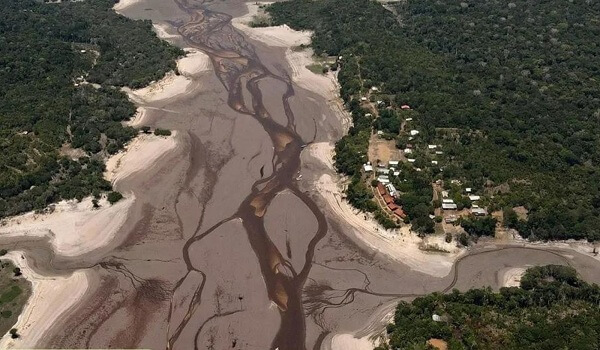According to a new research published in the journal Nature Geoscience, groundwater is expected to rise by 2-3.5 °C before the end of this century, which can threaten water quality and safety. Also, ecosystems dependent on water resources can also be at risk.
Key facts related to the research study
- Researchers led by Karlsruhe Institute of Technology, Germany, have designed the world’s first ‘global groundwater temperature model’ for research work.
- Its purpose is to display the increasing temperature of groundwater around the world.
- Groundwater is present in pore spaces in rocks and soil below the Earth’s surface.
- This model focuses on studying the effects of climate change and weather events on groundwater.
- Researchers have modeled the current groundwater temperature based on the expansion of heat in water and estimated the changes that will occur around the world between the years 2000-2100.
Key findings from the research study
- Under the Medium Emissions Scenario, groundwater at the water table depth (excluding permafrost regions) could warm by an average of 2.1°C between 2000 and 2100.
- Emission trends under this emissions scenario do not show much change from current historical patterns.
- However, under high emissions scenarios or fossil fuel-driven development, groundwater temperatures could rise by up to 3.5°C, according to the model.
- The model projects the highest temperature increases over central Russia, northern China, parts of North America and the Amazon rainforest in South America.
- The model also estimates that by 2100, 60-600 million people globally could live in areas where groundwater temperatures exceed the highest limits for drinking water temperature guidelines set by any country.
- According to the World Health Organization, only 18 of the 125 countries currently have temperature guidelines for drinking water.
Effects of thermal rise in groundwater
- Impact on ecosystem: Warming of groundwater can have adverse effects on ecosystems that depend on it.
- Impact on rivers: Rivers depend on groundwater to flow during dry periods. This can block their flow routes.
- Impact on biodiversity: Warmer water contains less dissolved oxygen, which can pose a threat to biodiversity.
- Impact on drinking water: Warmer groundwater increases the risk of disease-causing microorganisms developing, which can affect drinking water quality and people’s lives. This is particularly worrying in areas where access to clean drinking water is already limited and where groundwater is consumed without treatment. Warmer groundwater can also affect water quality by affecting its chemical composition and microbiology.
- Impact on fertilization process: Increasing temperatures will have significant impacts on the spawning process of local aquatic animals, which will affect industries and communities dependent on these ecosystems.
- Impact on economy: According to the study, warming of groundwater can also cause many economic problems. For example, countries like India depend on groundwater for many of their needs such as agriculture, construction, energy production.

